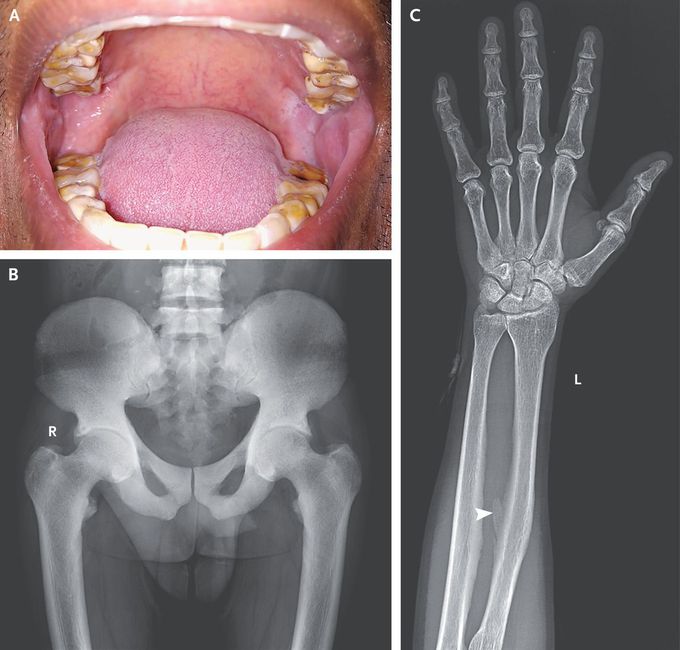


Skeletal Fluorosis
A 32-year-old man presented to the rheumatology clinic with a several-year history of lower back pain and stiffness of the neck, shoulders, and hips. On examination, he had yellowish-brown tooth discoloration (Panel A) and restricted movements of the cervical spine, hips, and shoulders. Pelvic radiography showed osteosclerosis without sacroiliitis (Panel B). T scores for bone mineral density were +12.1 at the lumbar spine and +3.1 at the hip. Laboratory tests showed an alkaline phosphatase level of 479 IU per liter (reference range, 80 to 240) and a parathyroid hormone level of 103 pg per milliliter (reference range, 15 to 68), with normal levels of creatinine, calcium, and vitamin D. Since the patient lived in an area with high levels of fluoride in the groundwater, skeletal fluorosis was suspected. Radiography of both forearms showed interosseous membrane calcification (Panel C, arrowhead). The serum fluoride level was 0.05 ppm (reference value, <0.02 ppm), and the 24-hour urinary fluoride excretion was 7.5 ppm (reference value, <0.1 ppm), which confirmed the diagnosis. He was advised to defluorinate his drinking water and was treated with calcium, vitamin D, and nonsteroidal antiinflammatory drugs. Two years later, he reported a 50% reduction in pain and stiffness.

